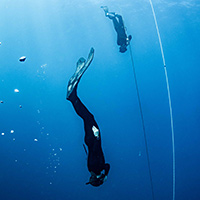Our story
How it started
An endangered species on the brink of extinction
The Mozambique Channel, between Madagascar and Mozambique, is a global hotspot for these threatened sharks. Unfortunately, observations from fishery observers on tuna fishing vessels found that a steep decline in sightings within the Channel took place between 2000 and 2007 (the last year for which data was published) compared to the previous decade. A 79% decline in sightings was also documented between 2005 and 2011 (and has persisted to 2016) in southern Mozambique. Threats to whale sharks are widespread, and include plastic pollution, boat collisions, bycatch, targeted illegal fisheries and climate change.
Based on these results, whale sharks (Rhincodon typus) are listed as Endangered [EN] on the International Union for Conservation of Nature (IUCN) Red List since 2016, and recently have been upgraded to Appendix I of the Convention on the Conservation of Migratory Species of Wild Animals (CMS) and Appendix II of the Convention on International Trade in Endangered Species of Wild Fauna and Flora (CITES). For detailed and the most up-to-date information about whale shark biology, ecology and conservation please check the 2016 IUCN Red List assessment species page.
Whale sharks of Madagascar
A new hotspot for the species
Whale sharks have been visiting the waters of Nosy Be since decades, known as “marokintana” meaning “many stars” in Malagasy. The first study on whale sharks in Nosy Be took place from 2005-2007 resulting in a publication on whale shark occurrence in Madagascar. Since then, regular reports of whale shark sightings have been noted around Nosy Be and, as a result, a tourism industry based around these sharks started to develop from 2011.
In 2014, project founder Stella Diamant saw her first whale shark in Nosy Be and started looking into setting up a project with tourism operators. Before this time, no work had been undertaken to establish population size, trend or connectivity with other regional aggregations. Whale sharks also lack protection in Madagascar and, in the face of growing tourism, no local regulations were in place to regulate interactions.
Following opportunistic data collection by our current partner Les Baleines Rand’eau in 2015, over 200 whale shark sightings were documented in Nosy Be in late 2015; making it likely this area is a relatively important hotspot for the species on a global level. These results were presented at the International Whale Shark Conference IV in Qatar, and marked the beginning of dedicated data collection and the inception of the Madagascar Whale Shark Project in 2016. The project was co-supervised by whale shark expert Dr. Simon Pierce and marine megafauna specialist Dr. Jeremy Kiszka.
How our data supports national protection efforts



